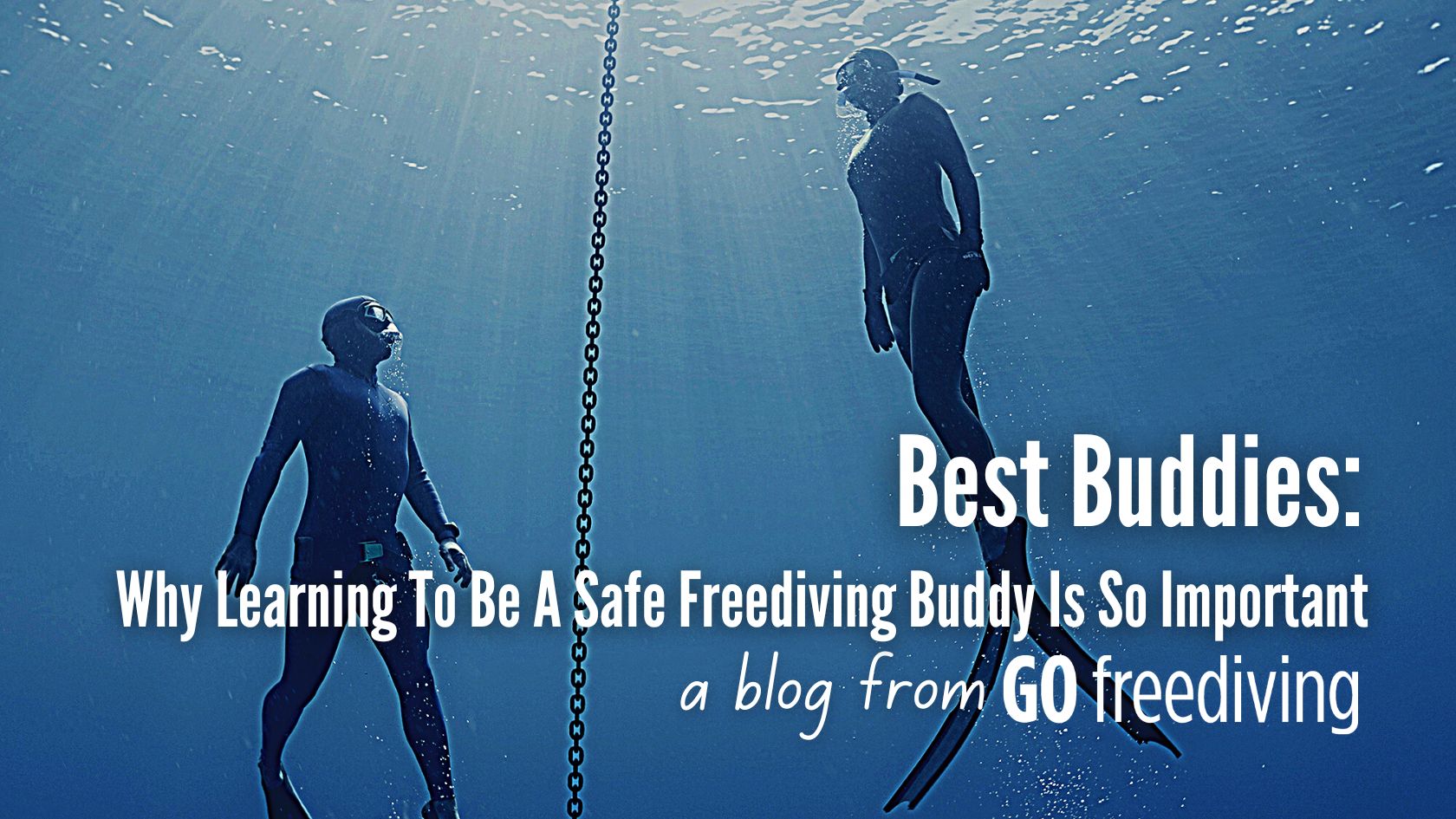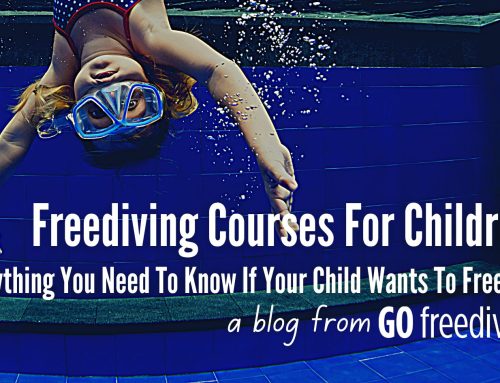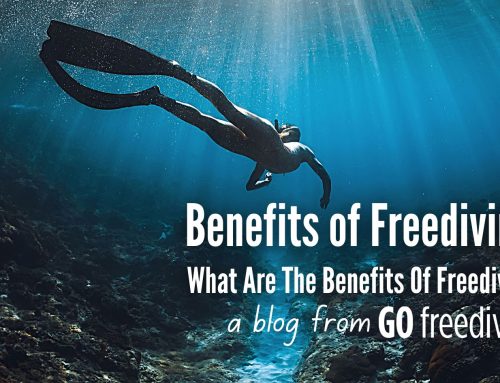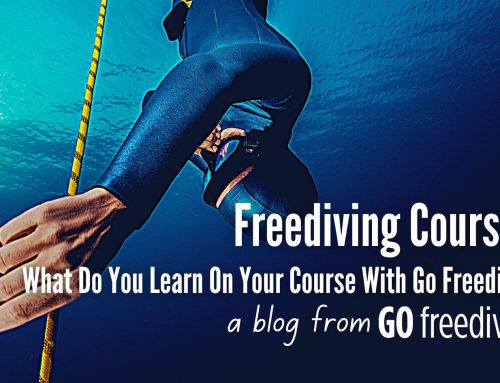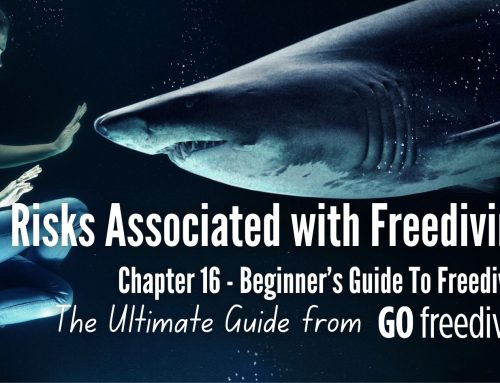Any responsible freediver will ensure they have a qualified freediving buddy with them at all times – one who is trained and able to rescue them from any scenario they might find themselves in, while extending the same level of safety and reassurance in return to their freediving buddy.
When a student chooses to do a RAID freediver course, while their primary objective in most cases, is to become a safe freediver, they will also be expected to learn how to be a safe freediving buddy too.
This responsibility begins before either divers even enter the water. There should be a robust dive plan, risk assessment and emergency plan in place, and they should have told others when and where they are diving.
Equipment and bouyancy should be checked to ensure it is safe and suitable for the conditions being diving in.
You cannot predict what may happen to your body or the environment whilst you freedive, and so you must always dive with every possible safety angle covered. It does not matter how capable a freediver you are; freak accidents can and do happen, and without obeying basic safety rules you cannot guarantee your personal safety.

What makes a good freediving buddy?
A good freediving buddy is someone who understands their role and responsibility for the diver. That includes:
- Checking the diver’s mask, hood and equipment (for example making sure the mask skirt is inside the hood)
- Knowing what the diver intends to do
- Understanding what the diver wants them to do
- Clear communication at all times
- Meeting them at a pre-agreed depth if doing a depth dive
- Being able to rescue them if needed
If you are a regular freediving buddy for a diver you will develop a pre-dive routine that is efficient, effective and safe. The requirements of a freediving buddy will vary depending on the freediving discipline being performed. For example:
Static apnea requires intense concentration and multi-tasking – clock watching, communication, observing the diver, coaching, physical support.
Dynamic apnea requires physical effort to keep up with the diver, give them room to turn, coach them through post dive procedure.
Depth disciplines requires the freediving buddy to descend to a pre-agreed depth to meet the diver and surface together, ready to intervene if something goes wrong, ensuring you are no more than a hand’s grab away at any time.
Recreational diving requires both divers to obey the ‘one up, one down’ rule, whereby one of you dives whilst the other one becomes the buddy. Your risk assessment should determine whether a line and a lanyard, either secured to a boat or a large freediving buoy should be used.
Spearfishing is safest when the dive is with one gun between two divers. The diver would be classed as the one being attached to a line running to the buoy.
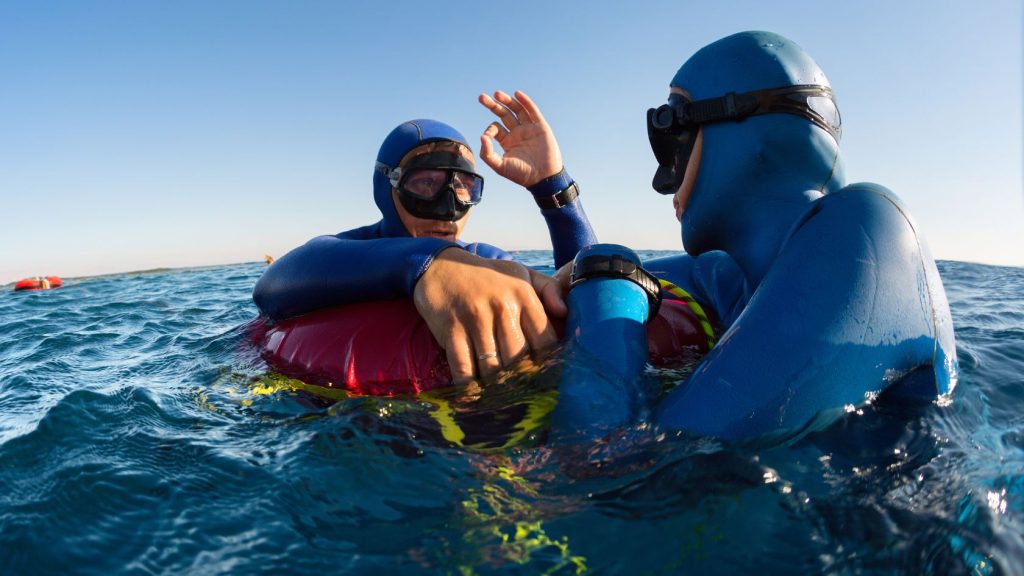
What freeediving buddy safety techniques does Go Freediving teach?
Go Freediving follows the RAID learning programme for our freediving courses. As well as classroom input regarding how to prepare a dive plan and risk assessment, students are also expected to complete a number of practice safety and rescue scenarios. Here is a list of the skills each student must master to be considered a safe freediving buddy.
Correct freediving buddy safety system
Here the student must have mastered the buddy safety system for freediving by always freediving with a buddy present & displaying the correct direct supervision techniques of the one up one down freediving code of conduct at all times.
Perform a correct rescue scenario for dynamic
For this skill they must have mastered rescue and safety skills for black out, hypoxic fit, mastered rescue underwater & rescue on the surface using the Rescue Response Revive protocol during Dynamic Freediving skills.
Perform cramp removal on freediving buddy
The student will have performed and mastered techniques used to relieve leg/foot cramps on a buddy.
Perform the tired or injured diver tow technique
Towing a tired freediving buddy by using a pushing technique and a pulling technique using head support in case of an unconscious diver is another skill they are required to have mastered.
Perform a correct Shallow Water Blackout rescue of freediving buddy scenario from 10m
To pass this test the student must have mastered rescue and safety skills for shallow water blackout, due to hypoxia, mastered rescue from depth & subsequent rescue on the surface using the Rescue Response Revive protocol while remaining calm and in control using proper techniques.
Freediving Courses With Go Freediving
Go Freediving is the longest established, most experienced and friendliest freediving course provider in the UK, led by world class freediving instructor trainer Emma Farrell, and her team of personally trained instructors. No other course provider has such a good instructor to student ratio, safety record and personal touch.
Whether you’re a beginner dipping your toes into the world of freediving, a seasoned pro looking to turn professional, or simply a freediver of any level who wants the best freediving holiday in the world, we’re here for you!
Also check out our online guide, The Beginners Guide to Freediving by clicking here!
Keep in touch with everything Freediving
Subscribe to our mailing list for weekly newsletters with exclusive articles, news, films, offers and more!
And check out You Tube!

